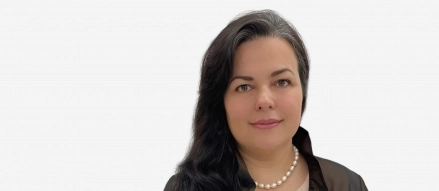Global Reporting Initiative (GRI)
When it comes to sustainability reporting, the pioneer is undoubtfully the Global Reporting Initiative (GRI). Founded in 1997 by two non-profit associations, Ceres and Tellus Institute, with the support of the United Nations Environment Program, the GRI aims at harmonising the disclosure of companies’ sustainability report by providing principles, guidelines, and tools. The final objective is to make the sustainability topic more transparent and visible in the companies’ annual report.
As of 2021, the GRI reporting framework is composed of 37 standards, divided in 4 categories: Universal Standards, Economic Standards, Environmental Standards and Social Standards. This set is constantly evolving, as some principles might be added, modified, or removed, to better reflect the current sustainability trends.
Today, more than 15,000 organisations in more than 90 countries are using GRI’s framework, on a voluntary basis. Moreover, even though these guidelines are primarily meant to be used by private companies, the full set of standards is available online for free to anyone.
Taskforce for Carbon-related Financial Disclosures (TCFD)
The Taskforce for Carbon-related Financial Disclosures (TCFD) was created in 2015 by the Financial Stability Board (FSB) at the instigation of the G20 and aims at homogenising the companies’ disclosure related to their impact on climate change, in order to make them more consistent and comparable between one another. The taskforce is made up of 32 members and gives an accurate representation of the diversity of the market, in terms of industries, countries, and positions (i.e., data preparers, such as Heads of CSR/Sustainability, or data users, such as banks, investors or insurers).
In 2017, the TCFD issued a final report, which compiles 11 recommendations divided in 4 categories: Governance, Strategy, Risk management, and Metrics and targets. Any individual willing to know more about them can download this report on the TFCD’s website. The same month, the TFCD also issued an Annex document, specifically to provide guidance to companies interested in using the TFCD framework in their disclosures.
The United Kingdom has already announced that TFCD-aligned disclosures will be mandatory for every company by 2025, while other countries are considering the same option. Indeed, the TFCD framework is supported by more than 1,500 organisations across the world.
Carbon Disclosure Project (CDP)
Founded in 2000 by Paul Dickinson, a British entrepreneur specialised in sustainability topics, the Carbon Disclosure Project (CDP) ambitions to participate in creating a more sustainable global economic system. The CDP focused primarily on issues related to greenhouse gas emissions (GHG), until it launched a second rating about water security in 2010, and a third rating related to forests preservation in 2012.
Each year, the CDP makes available to any interested organisation three questionnaires, each one related to one of the topics mentioned above. Then, the CDP analyses the answer to provide a rating, which are divided as followed, from the best rating to the worst: A, A-, B, B-, C, C-, D, D-. There is also a ninth rating, F, attributed to companies that do not provide sufficient information to draw a conclusion.
In 2020, 812 cities, 131 states and regions and 9,617 companies from over 90 countries have responded to the annual questionnaire. The CDP then disclosed the A-list, the list of companies with at least one A rating in either category. The ratings of each respondent company are available to anyone on the CDP’s website. The CDP does not make public the quantitative data sent by the volunteer organisations, but a more complete report designed for companies and investors is also available, behind a paywall.
Sustainability Accounting Standards Board (SASB)
The Sustainability Accounting Standards Board (SASB) is a non-profit organisation founded in 2011 by Jean Rogers, in order to develop sustainability accounting standards on the model of International Accounting Standards Board (IASB). Their standards are designed so that sustainability disclosures are facilitated and contain useful and comparable information for investors. The SASB created a unique set of standards for each industry, 78 in number. These standards were released in 2018.
The SASB only released standards: no rating or scoring system is used the information is meant to be used and analysed by investors when considering a transaction.
Although the SASB standards were first produced to be used by US public companies, any company in the world is free to follow and use SASB’s framework. Today, more than 1,000 companies, including 500 firms located outside of the United States, have adopted the SASB’s principles.
Since 2021, the SASB has been one of the two members of the Value Reporting Foundation, after a merge with the International Integrated Reporting Council.
International Integrated Reporting Council (IIRC)
The IIRC was founded in 2010 by the Prince of Wales, along with other international partners such as regulators, investors, accountants and NGOs. Its purpose is to create an international integrated reporting framework with clear guidelines, in order to facilitate and enhance companies’ sustainability disclosures on matters like strategy, governance or performance. The scope is global, hence any company from any country or industry in the world is invited to use the IIRC’s framework.
The guidelines were designed to serve two objectives: making the information more material and comparable for investors and helping the companies’ management to make the right decisions about sustainability and CSR. In 2020, 2,500 companies from over 70 countries disclosed sustainability information in their annual report using IIRS’s framework.
Since 2021, the IIRC has been one of the two members of the Value Reporting Foundation, after a merge with the Sustainability Accounting Standards Board.
Value Reporting Foundation (VRF)
The Value Reporting Foundation (VRF) was created in June 2021, by the merge of the SASB and the IIRC, with the aim of simplifying the standards and create a common and complete framework regarding sustainability disclosures.
The SASB and the IIRC are still in existence, and the VRF oversees their activity.
UN Global Compact (UNGC)
The United Nations Global Compact (UNGC) is a non-binding initiative launched in 2000 by the United Nations (UN), which aims at encouraging firms to embrace more sustainable and socially responsible policies and to report their progress. To do so, the UNGC has elaborated and issued a set of ten principles divided in four categories: Human Rights, Labour, Environment and Anti-Corruption. The UNGC also supports and promotes the Sustainable Development Goals for 2030.
As of 2021, more than 18,000 organisations from 162 countries and territories have declared supporting to the UNGC. Any company or organisation in the world can join the Global Compact. As the civil society is a major stakeholder in the accomplishment of the SDGs, the UNGC also provides guidance, documentation and tools to any individual willing to engage locally.
As mentioned before, the UNGC is a non-biding project. It is meant to be a forum, a network to spread awareness of the sustainability topic, and not a regulatory body. The final purpose of the UNGC is to develop and implement universal sustainability principles to support UN goals and fight again climate change and inequalities.
Sustainable Development Goals (SDGs)
The Sustainable Development Goals (SDGs) are a set of 17 interconnected objectives fixed by the United Nations (UN) in 2015 as part of their 2030 Agenda, to take over from the Millennium Development Goals which ended the same year. Each goal includes several targets to be met on the global level by 2030, for a total of 169 targets. The progress is monitored by the UN organisations, and the progress can be tracked on a specific website, SDG-Tracker, where all 232 indicators are indexed.
Each individual and organisation’s participation is required to meet these SDGs. Hence, to spread awareness of these goals among the people, the public organisations and the private companies, the UN has organised thousands of events and actions around the world related to the SDGs and has sponsored more than 1,000 publications on this topic so far.
Dow Jones Sustainability Index (DJSI)
The Dow Jones Sustainability Index (DJSI) was founded in 1999 by the strategic partnership of Dow Jones Indices (which has since merged with S&P Indices to create S&P Dow Jones Indices) and RobecoSAM (an asset management firm specialised in sustainability investments). It consists of a family of the most sustainable market caps in each identified industry, 61 in number as of 2021. This list is renewed each year as the sustainability assessment is reperformed and the annual report is issued.
Via the S&P Global Corporate Sustainability Assessment (CSA), the DJSI evaluates public, listed companies based on their sustainability performance thanks to a wide set of criteria, which are divided in 3 dimensions: Economic, Social and Environmental. The top performing companies are then retained to form the DJSI family.
There is a global index, called DJSI World, as well as other regional or national indexes, such as DJSI Europe, DJSI Emerging Markets or DJSI Chile. The same process applies for every index. The DJSI has primarily been conceived for investors who wants to include a sustainable dimension in their portfolio, by quickly identifying the most sustainable companies in every industry.
Other organisations
Other organisations with a focus on a more specific industry were created with the same purpose. For instance, we can name:
- The Global Real Estate Sustainability Benchmark (GRESB), a private profit organisation founded in 2009 and dedicated to real estate and asset management firms. It offers an in-depth analysis of the ESG performance of the real assets, in order to facilitate the comparison between them.
- The Global Alliance for Banking on Values (GABV), a global network of about 60 banks and banking organisations launched in 2009. Its purpose is to use finance to foster sustainable economic, social, and environmental development and to propose an alternative, more sustainable financial system.
Sources
https://www.caesarsustainability.com/blog/quick-guide-to-sustainability-frameworks
https://www.measurabl.com/the-top-five-sustainability-reporting-frameworks-you-should-know/
https://www.cpajournal.com/2018/07/30/the-current-state-of-sustainability-reporting/
https://www.globalreporting.org/
https://www.fsb-tcfd.org/about/
https://www.gov.uk/government/publications/uk-joint-regulator-and-government-tcfd-taskforce-interim-report-and-roadmap
https://assets.bbhub.io/company/sites/60/2020/10/FINAL-2017-TCFD-Report-11052018.pdf
https://www.cdp.net/en
https://www.cdp.net/en/companies/companies-scores
https://www.sasb.org/
https://sdgs.un.org/fr/goals
https://www.valuereportingfoundation.org/#
https://sdg-tracker.org/
https://www.unglobalcompact.org/about
https://www.spglobal.com/esg/performance/indices/
https://gresb.com/
https://www.gabv.org/
https://integratedreporting.org/







